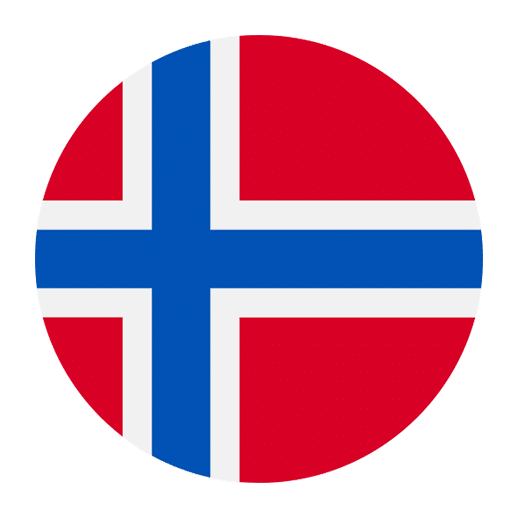Learning a new language can be a fascinating journey filled with unexpected discoveries and intriguing challenges. One such challenge when learning Norwegian is distinguishing between words that sound similar but have different meanings. In this article, we’ll explore two such words: barn and bånd. Both of these words are pronounced similarly, but they mean entirely different things. Understanding these differences can help you avoid misunderstandings and improve your Norwegian language skills.
Phonetics and Pronunciation
To start, let’s delve into the pronunciation of these two words.
Barn is pronounced as /bɑːrn/, which can be broken down into:
– The initial sound is a voiced bilabial stop /b/, similar to the English “b” in “bat.”
– The vowel sound is a long /ɑː/, similar to the “a” in “father.”
– The final sound is a rolled or tapped /r/ followed by the nasal /n/, much like the “rn” in “barn” in English but with a more pronounced roll of the “r.”
On the other hand, bånd is pronounced as /bɔːn/, which consists of:
– The initial sound is the same as in barn, a voiced bilabial stop /b/.
– The vowel sound is a long /ɔː/, similar to the “aw” in “saw.”
– The final sound is a nasal /n/, identical to the “n” in “barn,” but without the rolled or tapped /r/.
Meaning and Usage
While the pronunciation differences are subtle, the meanings of these two words are vastly different.
Barn
In Norwegian, barn means “child.” It’s a common noun used in various contexts:
– “Jeg har et barn” translates to “I have a child.”
– “Barnet leker i hagen” means “The child is playing in the garden.”
– “Barnehage” translates to “kindergarten,” literally meaning “child garden.”
Barn can also be used in plural form, which is “barn” (the same as the singular form). For example:
– “Vi har to barn” means “We have two children.”
– “Barnene leker sammen” translates to “The children are playing together.”
Bånd
Conversely, bånd means “ribbon” or “band.” This word is used in different contexts as well:
– “Jeg trenger et bånd til gaven” translates to “I need a ribbon for the gift.”
– “Musikeren spiller med et bånd” means “The musician plays with a band.”
– “Hunden har et nytt bånd” translates to “The dog has a new leash.”
Bånd can also be used metaphorically to mean “ties” or “bonds”:
– “De har sterke bånd” means “They have strong bonds.”
– “Familiebånd er viktige” translates to “Family ties are important.”
Common Mistakes and Tips
Given their similar pronunciations, it’s easy to mix up barn and bånd, especially for beginners. Here are some tips to help you differentiate between them:
1. **Context is Key**: Pay close attention to the context in which the words are used. If the conversation is about children, the word is likely barn. If it’s about gifts, music, or dogs, bånd is probably the correct word.
2. **Practice Pronunciation**: Make an effort to practice the subtle differences in pronunciation. Recording yourself and comparing it with native speakers can be highly beneficial.
3. **Use Mnemonics**: Create a mnemonic to help remember the meanings. For example, think of “barn” as a “child” playing in a barn (a type of building) and “bånd” as a “ribbon” you might find tied around a gift.
4. **Listen and Repeat**: Engage in listening exercises where you hear these words used in sentences. Repeat them aloud to get used to the subtle differences in pronunciation.
5. **Language Exchange**: Practice with a native Norwegian speaker who can provide immediate feedback and correct any mistakes.
Grammar and Sentence Structure
Understanding how these words fit into Norwegian grammar and sentence structure can also be helpful.
Using Barn in Sentences
When using barn in a sentence, remember that it can act as the subject, object, or part of a possessive phrase:
– Subject: “Barnet løper.” (The child runs.)
– Object: “Jeg ser barnet.” (I see the child.)
– Possessive: “Barnets leker er overalt.” (The child’s toys are everywhere.)
In possessive phrases, note that Norwegian often uses the suffix “-s” to denote possession, similar to the English possessive ‘s.
Using Bånd in Sentences
Bånd can also be used as a subject, object, or in descriptive phrases:
– Subject: “Båndet er rødt.” (The ribbon is red.)
– Object: “Hun knytter båndet.” (She ties the ribbon.)
– Descriptive: “Et bånd av kjærlighet.” (A bond of love.)
In plural form, bånd remains “bånd,” similar to its singular form:
– “Båndene er vakre.” (The ribbons are beautiful.)
Cultural Context and Usage
Understanding the cultural context in which these words are used can provide additional insights and make learning more engaging.
Barn in Norwegian Culture
In Norway, children are highly valued, and the term barn is frequently encountered in various aspects of life. The country places a strong emphasis on child welfare and education. For example:
– “Barnehage” (kindergarten) is an essential part of early childhood education, and nearly all children attend.
– “Barnas dag” (Children’s Day) is celebrated with various activities dedicated to children.
Bånd in Norwegian Culture
Bånd can be seen in various cultural contexts as well:
– During Norwegian Constitution Day (17th May), people wear traditional costumes, often adorned with ribbons (bånd).
– In music, “band” (bånd) is a significant part of Norwegian culture, with many local bands playing a variety of genres.
– The concept of “familiebånd” (family ties) is central to Norwegian values, emphasizing the importance of family connections.
Exercises and Practice
To reinforce your understanding of barn and bånd, here are some exercises you can try:
1. **Fill-in-the-Blanks**: Complete the sentences with either barn or bånd.
– Jeg har et _______.
– Hunden har et nytt _______.
– _______ leker i parken.
– Musikeren spiller med et _______.
2. **Translation Practice**: Translate the following sentences from English to Norwegian.
– The child is happy.
– I need a ribbon for the gift.
– They have two children.
– The musician plays with a band.
3. **Listening Exercise**: Listen to a Norwegian podcast or watch a Norwegian TV show and note down instances where you hear barn and bånd. Pay attention to the context in which these words are used.
4. **Speaking Practice**: Practice speaking sentences using both words. Record yourself and compare your pronunciation with that of native speakers.
Conclusion
Mastering the subtle differences between words like barn and bånd is an essential part of becoming proficient in Norwegian. By understanding their meanings, practicing their pronunciation, and using them in context, you’ll be able to navigate these tricky waters with confidence. Remember, language learning is a journey, and every small step you take brings you closer to fluency. Happy learning!

